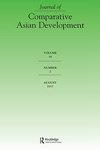中国新劳工政策:劳工非政府组织的引导发展
Q3 Social Sciences
引用次数: 0
摘要
根据“小政府,大社会”的原则,中国当局可能会大大扩大非政府组织的服务提供角色,而非政府组织并不打算挑战党国。这些非政府组织可以被允许在社会上有一个受尊重的位置,他们可以从政府那里获得财政资源来提供所需的服务。另一方面,被认为对党国构成威胁的非政府组织将继续受到压制。可能采取统一战线策略,这些非政府组织的领导人将被诱导改变他们的运作模式,使其成为中国当局可以接受的模式-即胡萝卜和大棒并存。与此同时,公民社会将在数量和质量上继续增长。乐观估计,现阶段中国有大约700 - 800万个社会组织,涉及约3亿人,约占中国总人口的五分之一。这一临界质量仍然不足以对党国政府施加压力,以引入严肃的政治改革,但如果这些“进步的公民社会人口”在不到10-15年的时间内扩大到总人口的30%或40%,那么可能会达到这个门槛。这可能不是定义或检查阈值的非常有用的方法,但却是一个有趣的说明。总而言之,在未来的四五年里,很难预测导致民主化的重大政治改革,公民社会也不太可能取得重大突破。但趋势是明显的,中国的公民社会将继续扩大和加强,压力将在党国和公民社会之间建立对话,以避免危机和暴力对抗。本文章由计算机程序翻译,如有差异,请以英文原文为准。
China's New Labour Policy: Guided Development for Labour NGOs
Abstract In line with the principle of ‘small government, big society', the Chinese authorities are likely to considerably expand the service delivery role of NGOs which do not intend to challenge the Party-state. These NGOs could be allowed a respected place in society, and they would have the financial resources from the government to offer needed services. On the other hand, NGOs which are perceived to pose a threat to the Party-state will continue to be suppressed. United front tactics are likely to be adopted, and leaders of these NGOs will be induced to alter their mode of operation into one acceptable to the Chinese authorities — i.e. both carrots and sticks are applied. Meanwhile, civil society will continue to grow quantitatively and qualitatively. Optimistic estimates are that, at this stage, China has about 7‒8 million social organizations involving about 300 million people, about one-fifth of China's total population. This critical mass is still inadequate to exert pressure on the Party-state to introduce serious political reforms, but if this ‘progressive civil society population' expands to 30 or 40 per cent of the entire population in less than 10‒15 years’ time, then the threshold may be reached. This may not be a very useful way of defining or examining the threshold, but is an interesting illustration. In sum, in the coming four or five years, it is difficult to anticipate serious political reforms leading to democratization, and civil society is not likely to achieve significant breakthroughs. But the trend is obvious, civil society in China will continue to expand and strengthen, and pressure will build for a dialogue between the Party-state and civil society to avoid crises and violent confrontations.
求助全文
通过发布文献求助,成功后即可免费获取论文全文。
去求助
来源期刊

Journal of Comparative Asian Development
Social Sciences-Political Science and International Relations
CiteScore
1.30
自引率
0.00%
发文量
2
期刊介绍:
The Journal of Comparative Asian Development (JCAD) aims to offer the most up-to-date research, analyses, and findings on the many aspects of social, economic, and political development in contemporary Asia conducted by scholars and experts from Asia and around the world.
 求助内容:
求助内容: 应助结果提醒方式:
应助结果提醒方式:


